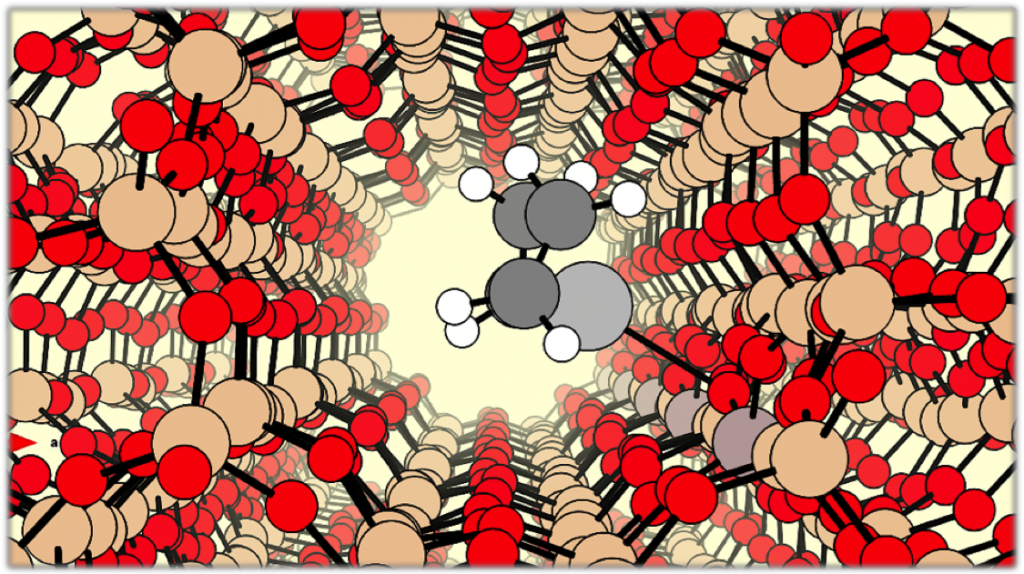Para-xylene is one of the most valuable aromatic compounds today. It is primarily used for producing polyester fibers and polyethylene terephthalate. For the last few decades p-xylene demand has been rising and so has research about developing better processing routes to produce p-xylene. One such route is alkylation of toluene with methanol to selectively produce p-xylene. We are focusing on manipulating and utilizing the various zeolite properties such as acidity, pore sizes and diffusion length of different frameworks as well as optimizing the reaction conditions to improve the p-xylene selectivity and yield. We are collaborating with the group of Dr. Rimer and combine experimental test results with atomic-scale DFT calculations to determine the dominant mechanism for this reaction. Micro-kinetic modelling forms the bridge between theory and experiment.
Recently, metal-exchanged zeolites with Lewis acid functionality have extended the application range of zeolites to the selective catalytic reduction (SCR) in automotive emission control and have potential for other emerging applications in hydrocarbon upgrade. In our group, we explore the fundamental chemistries that drive hydrocarbon conversion in metal-exchanged zeolites using a combination of state-of-the-art experimental and computational tools. We leverage the accurate transient kinetics capability of the in-house TAP technique to aid in the understanding and modeling of primary reactions that take place within zeolites. Additionally, there are also dedicated efforts underway to build screening tools to help in building of design principles for synthesizing metal-exchanged zeolites.

Publications:
- Ghorbanpour, A., Rimer, J. D. & Grabow, L. C. Computational Assessment of the Dominant Factors Governing the Mechanism of Methanol Dehydration over H-ZSM-5 with Heterogeneous Aluminum Distribution. ACS Catal. 6, 2287–2298 (2016).
- Ghorbanpour, A., Rimer, J. D. & Grabow, L. C. Periodic, vdW-corrected density functional theory investigation of the effect of Al siting in H-ZSM-5 on chemisorption properties and site-specific acidity. Catal. Commun. 52, 98–102 (2014).
- Oleksiak, M. D., Ghorbanpour, A., Conato, M. T., McGrail, B. P., Grabow, L. C., Motkuri, R. K. & Rimer, J. D. Synthesis Strategies for Ultrastable Zeolite GIS Polymorphs as Sorbents for Selective Separations. Chem. – A Eur. J. 22, 16078–16088 (2016).
- Hsieh, M.-F., Zhou, Y., Thirumalai, H., Grabow, L. C. & Rimer, J. D. Silver-Promoted Dehydroaromatization of Ethylene over ZSM-5 Catalysts. ChemCatChem 9, 1675–1682 (2017).
- Ghorbanpour, A., Gumidyala, A., Grabow, L. C., Crossley, S. P. & Rimer, J. D. Epitaxial Growth of ZSM-5@Silicalite-1: A Core–Shell Zeolite Designed with Passivated Surface Acidity. ACS Nano 9, 4006–4016 (2015).
- Jangjou, Y., Do, Q., Gu, Y., Lim, L.-G., Sun, H., Wang, D., Kumar, A., Li, J., Grabow, L. C. & Epling, W. S. Nature of Cu Active Centers in Cu-SSZ-13 and Their Responses to SO 2 Exposure. ACS Catal. 8, 1325–1337 (2018).